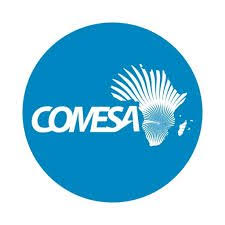
EABW News, Uganda
COMESA Resolves 95% Of NTBs At Borders
By EABW Editor
15th July 2020
At least 82% of the reported Non-Tariff Barriers in the COMESA region are those imposed on imports and exports of goods and services and are largely operational by design. According to trade experts, these type of NTBs are easy to identify and monitor.
Thus, from an analytical perspective, the relatively high rate of resolution of NTB cases in COMESA, which is over 95%, does not necessarily imply that the mechanisms established to eliminate NTBs are effective. Rather it shows that mechanisms in place capture more of the operational as opposed to the behind-the-border types of NTBs.
The behind-the-border measures are mainly imposed internally and include domestic legislation covering health, technical, product, labour, environmental standards, internal taxes or charges, and domestic subsidies.
According to the COMESA Director of Trade, Dr Christopher Onyango, the latter category is much more complex and difficult to identify and have in recent times become major sources of NTBs.
He was speaking at the opening of the virtual 8th Meeting of the COMESA NTBs Focal Points which took place last week, 8 – 10 July 2020. Its objectives were to deliberate on the revised COMESA Non-Tariff Barriers regulations, the 2nd draft of the Working Procedures on implementation of COMESA NTBs regulations and to consider the outstanding Intra-COMESA NTBs.
He said several strategies and mechanisms have so far been put in place to reduce the occurrences and eliminate NTBs since the establishment of COMESA, particularly following the advent of the FTA regime. However, the NTBs have remained prevalent and continue to constrain the growth and expansion of intra-COMESA trade and investments.
“It is therefore important that we continue to review and improve existing regulations and mechanisms taking into account changing ecosystems, understanding key causes, analyzing regulatory regimes, production techniques and technological advancements,” he said.
In the COMESA region, some NTBs have remained unresolved for long, some dating back to 2000.
“In as much as willingness and commitment of parties involved may be critical, the effectiveness and capability of the mechanisms and institutional structures to resolving all types of NTBs require sustained review,” Dr Onyango explained.
“Regulations should take into account the nature, forms and categories of various non-tariff measures, domestic policies, laws and regulations and the diversity of economic sectors. But even more importantly, the regulations and procedures should be inclusive, taking into account small scale enterprises, youth and women as important players in the integration process.”
Although all member States have established NTBs Focal Points, several countries are yet to formalize and operationalize their National Monitoring Committees. These are considered critical to the implementation of the regulations and elimination of NTBs, even most important is sharing experiences and developing capacities to identify, categorize and report them as they occur.
Dr Onyango underscored the importance of sustained capacity building and information sharing to strengthen the ability to capture emerging issues and finding lasting solutions to NTBs.
Going forward, he said COMESA Secretariat will endeavour to elevate capacity building and research in the efforts to strengthen NTB mechanisms and effectively support their elimination from the region.
The meeting was attended delegates from by Burundi, Djibouti, D.R. Congo, Comoros, Egypt, Eswatini, Kenya, Libya, Madagascar, Malawi, Mauritius, Rwanda, Seychelles, Somalia, Sudan, Tunisia, Uganda, Zambia and Zimbabwe.